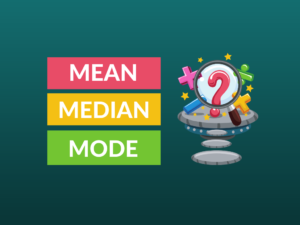Difference Between Bar Chart and Histogram
What is a Bar Chart?
A bar chart is a graphical representation of data that uses rectangular bars to represent different categories or groups. It is a visualization tool that displays the frequency, count, or value of each category. The length of each bar corresponds to the magnitude of the data it represents.
Examples of Bar Charts:
Here are a few examples of bar charts:
1. A bar chart showing the sales performance of different products in a month.
2. A bar chart comparing the population of different countries.
3. A bar chart representing the number of votes for each political party in an election.
Uses of Bar Charts:
Bar charts are widely used in various fields for data analysis and presentation. Some common uses of bar charts include:
1. Comparing data across different categories.
2. Showing trends or changes in data over time.
3. Summarizing large data sets in a concise and easy-to-understand manner.
4. Presenting survey results or feedback data.
5. Analyzing sales or revenue performance.
6. Visualizing market research data.
7. Communicating statistical data to a wide audience.
8. Creating infographics or reports.
What is a Histogram?
A histogram is a graphical representation of data distribution. Unlike a bar chart, which represents categories on the x-axis, a histogram displays the distribution of continuous numerical data. It consists of bars that represent the frequency or count of data falling within specific intervals or bins.
Examples of Histograms:
Here are a few examples of histograms:
1. A histogram showing the distribution of heights in a group of people.
2. A histogram representing the number of hours students spend studying per week.
3. A histogram displaying the frequency of temperature readings in a particular area.
Uses of Histograms:
Histograms are widely used in data analysis and statistics for understanding data distribution. Some common uses of histograms include:
1. Identifying patterns or trends in data.
2. Analyzing the shape, skewness, or symmetry of a distribution.
3. Detecting outliers or unusual data points.
4. Comparing data sets or groups.
5. Assessing the normality of data.
6. Understanding the spread or variability of data.
7. Exploring probability distributions.
8. Conducting hypothesis testing.
Differences between Bar Chart and Histogram:
| Difference Area | Bar Chart | Histogram |
|---|---|---|
| Representation | Represents categorical data | Represents continuous data |
| Axis | Uses a category (discrete) axis and a value (numeric) axis | Uses a continuous (numeric) axis |
| Data Intervals | Does not require equal data intervals | Requires equal data intervals |
| Data Type | Can handle both qualitative and quantitative data | Primarily used for quantitative data |
| Data Distribution | Does not display data distribution | Displays data distribution |
| Bar Placement | Bars are separated with gaps | Bars are contiguous with no gaps |
| Bar Width | Width of bars can be varied | Width of bars is fixed and represents data interval |
| Magnitude Comparison | Can compare magnitudes between categories | Does not directly compare magnitudes |
| Summarization | Can present summarized data for each category | Summarizes data by grouping it into intervals |
| Symmetry | Bars need not be symmetrical | Histogram should be symmetrical for normal distribution |
Conclusion:
In summary, a bar chart is used to represent categorical data and compare magnitudes between categories, while a histogram represents continuous data and displays data distribution. Bar charts are versatile and can handle both qualitative and quantitative data, whereas histograms primarily deal with quantitative data analysis and assess data distribution.
Knowledge Check:
1. What type of data does a bar chart represent?
2. What does a histogram display?
3. Can a bar chart handle qualitative data?
4. Are equal data intervals required in a histogram?
5. How are bars placed in a bar chart?
6. What does the width of bars in a histogram represent?
7. Can a bar chart directly compare magnitudes?
8. What kind of data do histograms primarily deal with?
9. What does a histogram summarize?
10. Should a histogram be symmetrical for a normal distribution?
Answers:
1. A bar chart represents categorical data.
2. A histogram displays data distribution.
3. Yes, a bar chart can handle qualitative data.
4. Yes, equal data intervals are required in a histogram.
5. Bars in a bar chart are separated with gaps.
6. The width of bars in a histogram represents the data interval.
7. Yes, a bar chart can directly compare magnitudes between categories.
8. Histograms primarily deal with quantitative data.
9. A histogram summarizes data by grouping it into intervals.
10. Yes, a histogram should be symmetrical for a normal distribution.
Related Topics:
1. Difference between Line Chart and Bar Chart
2. Understanding Data Distribution in Histograms
3. How to Create Effective Bar Charts
4. Tips for Interpreting Bar Charts
5. Using Histograms for Data Analysis


